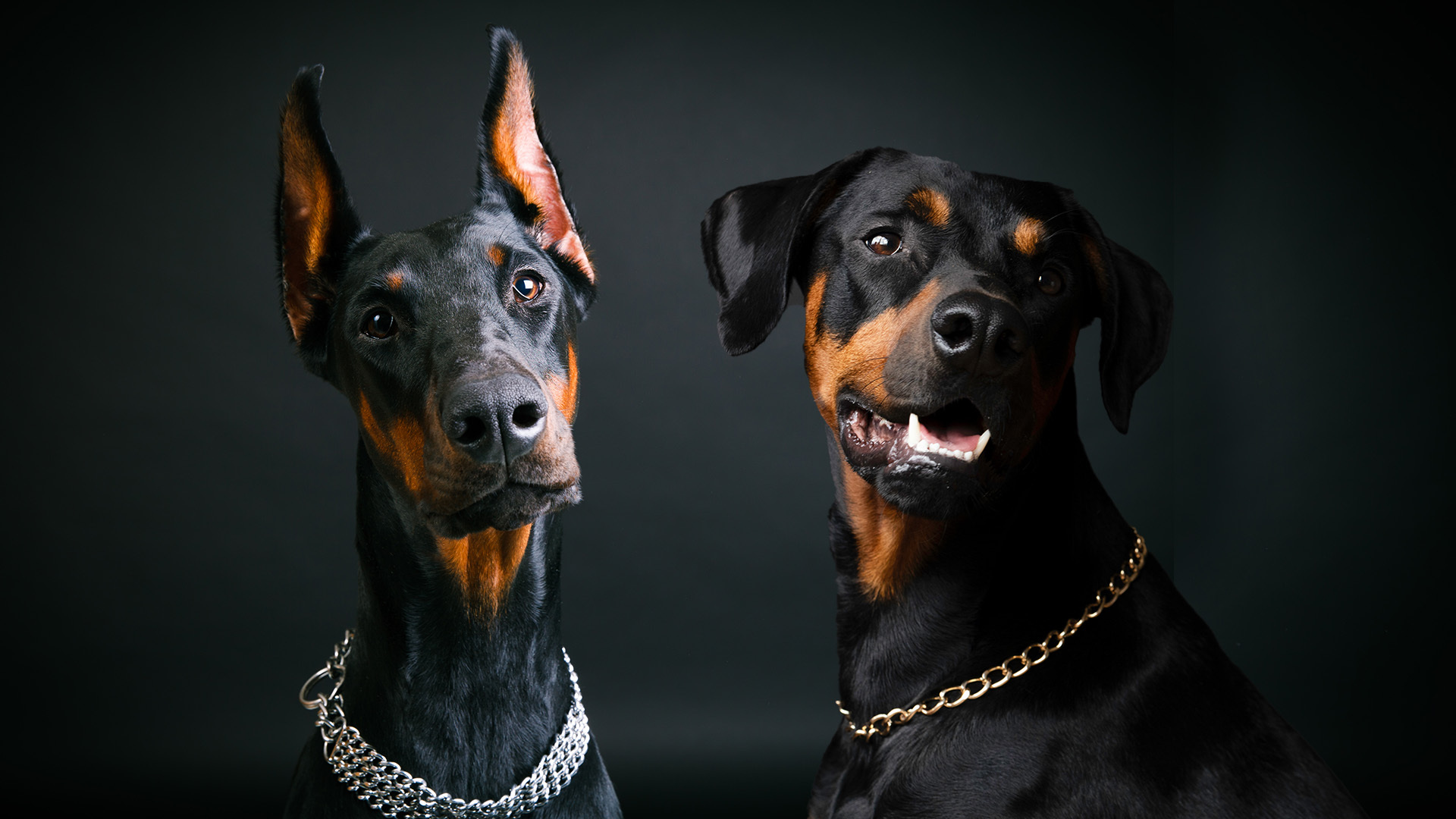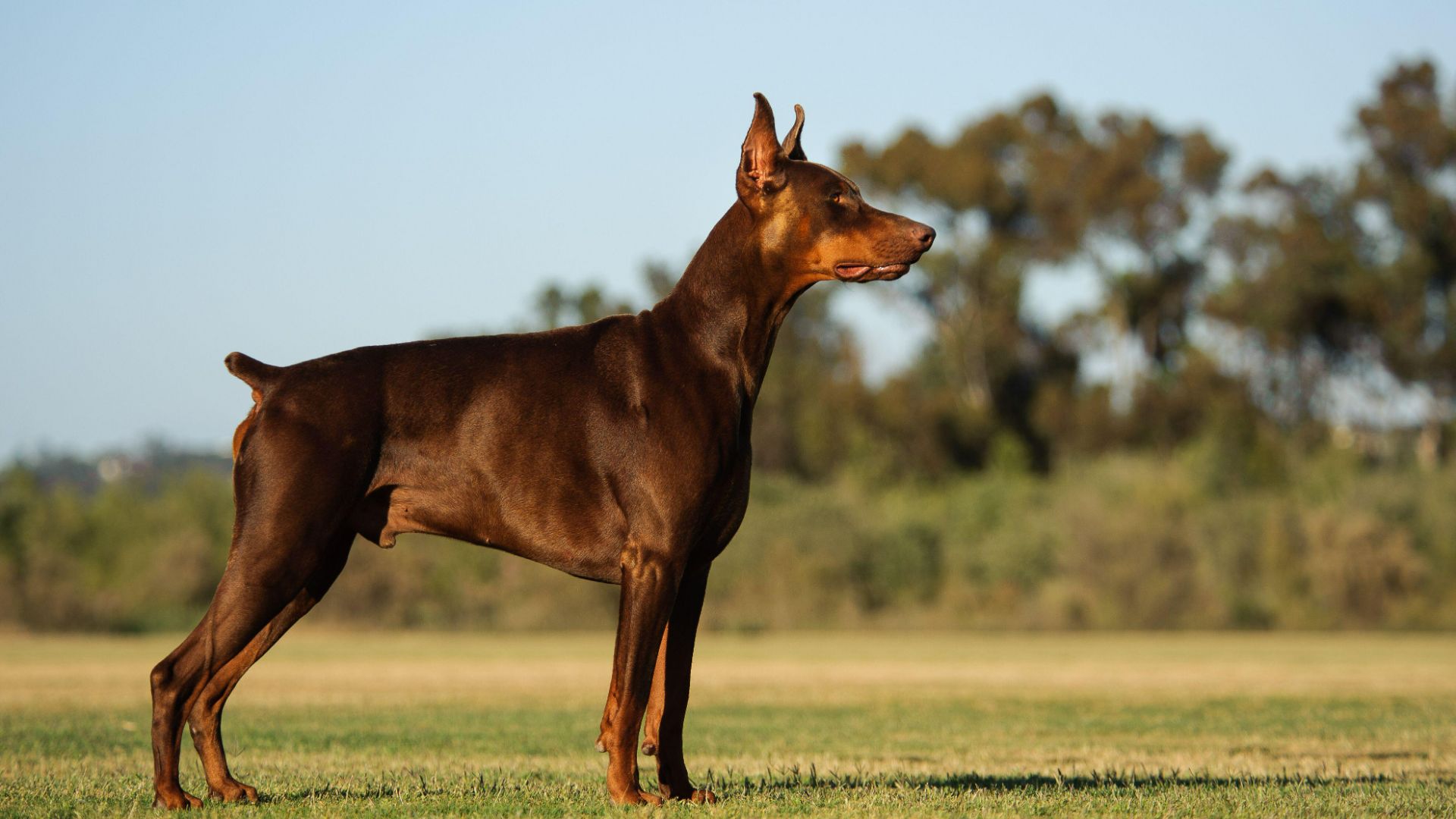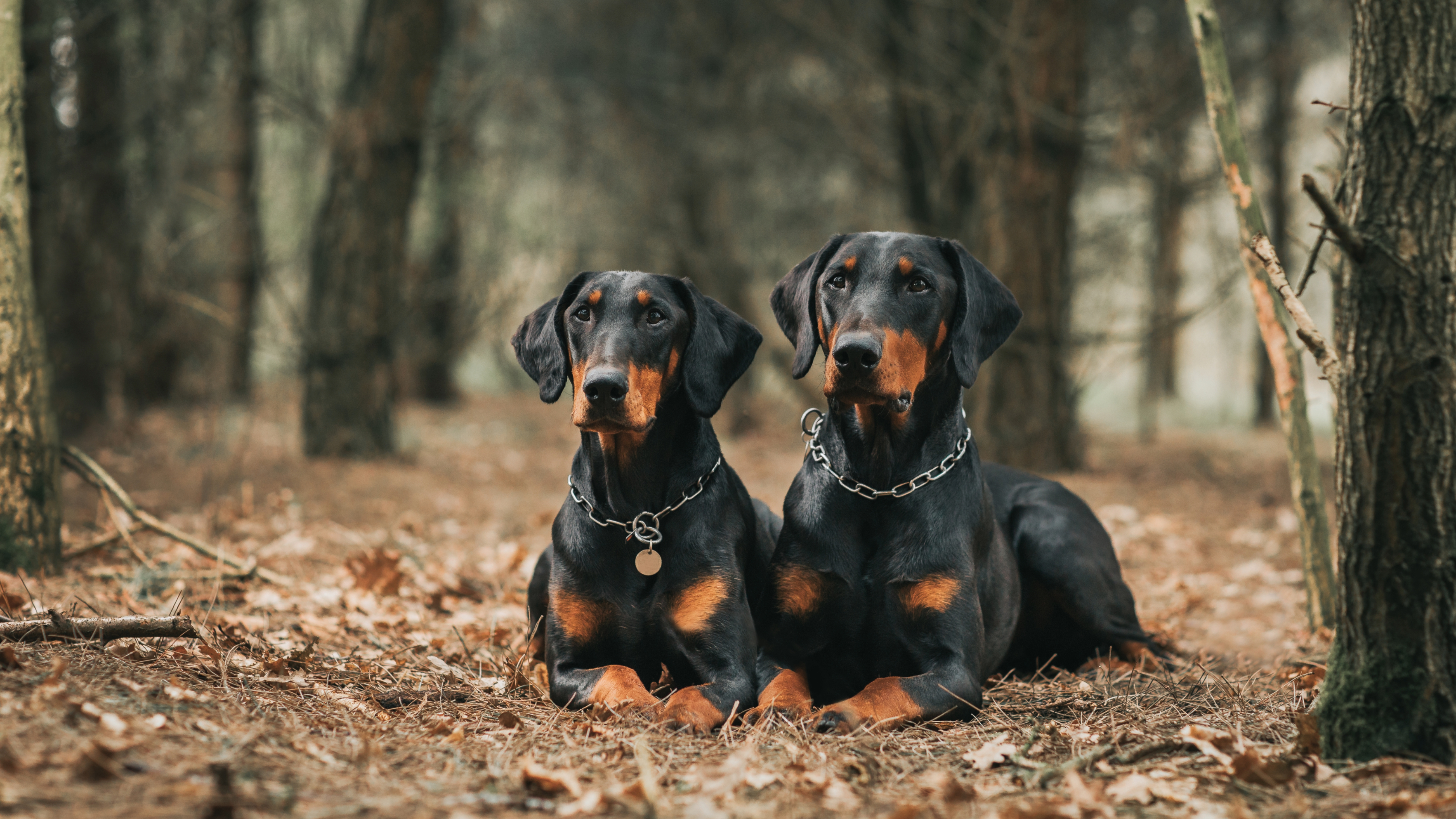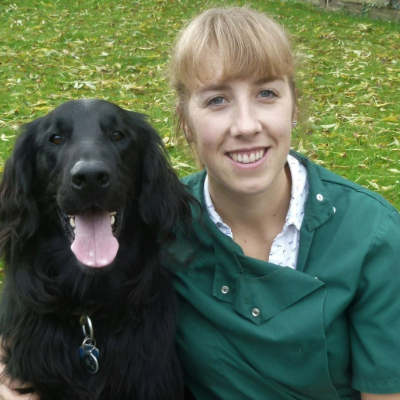European Doberman vs American Doberman: What’s the difference?
They may look similar, but there are some key differences between the European and American Doberman that are worth considering

When it comes to the European Doberman vs the American Doberman, you may think they look almost identical. However, dig a little deeper and you'll find that there are more differences between these Dobermans than first meets the eye.
The European Doberman is best suited to experienced owners and families with older children. While very affectionate, they're typically headstrong, require a lot of exercise and training, and are more of a working dog than a family dog.
Both breeds need a lot of exercise and love chasing after the best dog toys, but the American Doberman also loves to cuddle and is generally a lot more laid back and placid than its European counterpart.
However, with the right love and care, both of these breeds can make fantastic companions. To help you learn more, we turned to expert vet Dr Rebecca MacMillan. Below, she explains whether these dogs are easy to train, how much exercise they really need, and which owners they're best suited to.
Size: European Doberman vs American Doberman
When talking about the size of American and European Dobermans, there really isn't an awful lot that separates these two pups.
The European Doberman has the slight edge, with an average height of between 25-28 inches and an average weight of 65-105 pounds.
In comparison, the American Doberman is ever so slightly shorter and lighter, with most measuring somewhere in the vicinity of 24-28 inches and weighing 60-100 pounds.
Get the best advice, tips and top tech for your beloved Pets
However, the European Doberman tends to have a thicker bone structure, so even if they weigh roughly the same as the American Doberman, they can look somewhat heavier.
Appearance: European Doberman vs American Doberman

European Doberman

American Doberman
To the novice eye, it's hard to tell the difference between the European and American Doberman. However, look a little closer and you'll likely spot a few distinct physical traits that set them apart.
The European Doberman is slightly larger and a lot more muscular and robust than its American counterpart. They have a blockier head and muzzle, and their coat has darker markings.
The American Doberman has a leaner and more elegant build, and its head is much more wedge-shaped. You'll notice they have lighter, tan, or brown markings, and while they're still highly athletic, they lack the muscular density of their European cousins.
Trainability: European Doberman vs American Doberman
Training your dog on your own can feel challenging, but thankfully, both the European and the American Doberman are intelligent and trainable, which will make your job a whole lot easier!
"The European Doberman needs a firmer and direct approach than the more sensitive and eager-to-please American Doberman," says Dr MacMillan. "Out of the two, the American Doberman is the easiest to train. However, positive reinforcement should be used with both dogs. This involves rewarding desirable behavior rather than punishing any negative traits."
When it comes to the European Doberman, they tend to be quite headstrong, but they are also driven to be obedient, so training them without the help of a professional certainly isn't impossible. You may just need to invest a greater amount of time, patience, and consistency than you would with the American Doberman, who is less headstrong and therefore takes quicker to learning new commands.
Exercise: European Doberman vs American Doberman

Looking for an active breed that will happily keep pace with you when you're pounding the pavement or hiking your favorite trail? Both of these dogs are brilliant if you love living an outdoorsy lifestyle, and their agile frames mean they do well with high-intensity exercise.
"The European Doberman tends to be more energetic than the American variety, but both need up to 2 hours of exercise per day," says Dr MacMillan. "These dogs were originally bred for work, so they need plenty of physical activity to keep them happy. The exact amount will depend on age and health status."
Because the European and American Dobermans are considered the fifth smartest dog breed, you'll want to ensure you exercise both their bodies and their minds. Consider investing in a few of the best dog puzzle toys or playing some brain games for dogs with your fur friend, as this will prevent them from becoming bored and destructive.
Grooming: European Doberman vs American Doberman
If you're on the hunt for a low-maintenance fur friend whose coat doesn't require a lot of attention, then both the American and European Doberman tick this box nicely.
"Both types of Dobermans have sleek, short coats that are easy to care for," confirms Dr MacMillan. "Brushing them once or twice a week should be enough to keep things looking good. As with all dogs, daily teeth brushing is recommended and nail trims as required."
Regular brushing of short-haired breeds with one of the best dog brushes may not seem as essential as with longer-haired breeds, but it's a good way to remove dead hair and minimize shedding. Plus, if you're looking for ways to bond with your dog, regular grooming sessions can be a wonderful opportunity to strengthen your connection.
Health: European Doberman vs American Doberman

For many of us, how healthy a breed is something that plays an important role in deciding which fur friend to welcome into our family. Here's what Dr. MacMillan has to say about the potential health issues faced by these two breeds:
"American and European Dobermans suffer from similar health problems due to their shared heritage. Both varieties are prone to dilated cardiomyopathy (DCM), a condition that causes the heart muscle to become floppy and enlarged. This can lead to arrhythmia and cardiac failure.
“Von Willebrand's disease is an inherited blood clotting disorder that commonly affects both types of Dobermans. They are also susceptible to gastric dilatation volvulus (GDV), a condition that causes the stomach to bloat and twist on itself. Large, deep-chested breeds like the Doberman are at an increased risk of GDV.
“As with many pedigree breeds, both the European and American Dobermans can suffer from inherited eye conditions like progressive retinal atrophy (PRA) and hip dysplasia. A reputable breeder should carry out all the recommended health screens to ensure they are only mating healthy individuals, thereby increasing the chances of healthy puppies.
“There are not really any studies comparing the differences between the two breeds. It is thought that European Dobermans will be less likely to develop some of these inherited issues due to the wider gene pool available, but this has not been definitively proven."
Owner suitability: European Doberman vs American Doberman
Often, one of the hardest parts about adopting a dog is trying to decide which breed to choose! Taking into account things like what sort of temperament a breed is typically predisposed to having, as well as the kind of lifestyle you have, can help you ensure you find a fur friend who's a good fit.
"If you are looking for a family pet, then I would choose the American Doberman out of the two breeds," Dr MacMillan advises. "This dog is smaller, more affectionate, and calmer than its European counterpart. It would be more suitable for a novice owner, too, as it is easier to train. These dogs are better at reading human emotions and enjoy staying by your side.
“The European Doberman requires an experienced handler who can appropriately train this large, muscular dog. This variety would also be well suited for guard dog duties due to its more protective and assertive nature. Owners also rate the European Doberman as being much more high-energy than the American type, so they will need a household with an active lifestyle that can challenge them physically and mentally."
Read next: Cocker Spaniel vs Springer Spaniel.

Rebecca is a veterinary surgeon who graduated in 2009 from the Royal Veterinary College in London. She has a wealth of experience in first opinion small animal practice, having done a mixture of day-to-day routine work, on-call emergency duties and managerial roles over the years. Rebecca enjoys medicine in particular and she is proud to have recently achieved a BSAVA postgraduate certificate in small animal medicine (with commendation).
She writes on various feline and canine topics, including behavior, nutrition, and health. Outside of work and writing she enjoys walking her own dog, spending time with her young family and baking!
Edited by Georgia Guerin and Alexis de Leaver.
This feature was last updated in May 2025 by Bethany Stone.

Kathryn is a freelance writer who has been a member of the PetsRadar family since it launched in 2020. Highly experienced in her field, she's driven by a desire to provide pet parents with accurate, timely, and informative content that enables them to provide their fur friends with everything they need to thrive.
Kathryn works closely with vets and trainers to ensure all articles offer the most up-to-date information across a range of pet-related fields, from insights into health and behavior issues to tips on products and training.
When she’s not busy crafting the perfect sentence for her features, buying guides and news pieces, she can be found hanging out with her family (which includes one super sassy cat and a kitten), drinking copious amounts of Jasmine tea and reading all the books.
She has written for a range of publications, including Fit&Well, Top Ten Reviews, LiveScience, Goodto, and Product Hunt.
